Bogus Credit Card Bids Affect Kaminski, Grogan Auctions
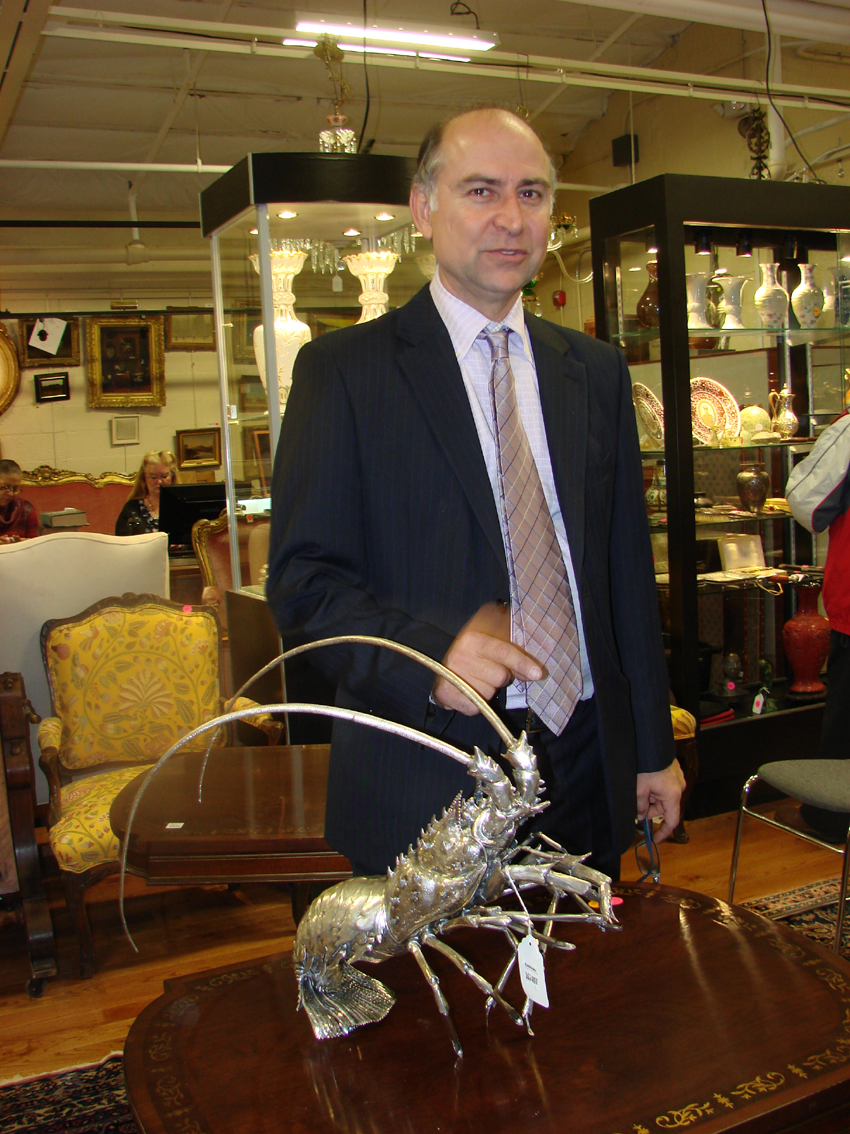
Frank Kaminski’s favorite item in the sale was a sterling silver lobster by Fratelli Lisi e Figli. It was done in the style of Buccellati.
Review and Onsite Photos by Rick Russack,
Catalog Photos Courtesy Kaminski Auctions
BEVERLY, MASS. — Frank Kaminski’s two-day sale the weekend after Christmas, December 26–27, attracted hundreds of Internet bidders, numerous absentee bids and the phone lines were put to good use. Prices were strong even though there were not many bidders in the salesroom. It was a good sale in all, but some questionable Internet bidding proved the need for caution.
Kaminski expressed recent concerns with online bidding, some of which need to be addressed. He freely discussed with Antiques and The Arts Weekly scams using bogus credit cards and bids not being honored.
Scam artists, using addresses in different parts of the country, bought three pieces of gold jewelry, totaling more than $19,000, at his September sale and used phony credit cards to pay. The credit cards were initially approved, and at the customers’ requests, the jewelry was shipped quickly. A few days later Kaminski learned that the credit cards were bogus and his bank account was charged for the full amount of the purchases. He is out the merchandise and is still battling the credit card companies over the money.
The scammers had established themselves as “legitimate” bidders by placing low bids at previous auctions so that there would be no suspicions. Subsequent investigations revealed that the shipping addresses used were phony and the phone numbers provided had been disconnected. Kaminski got little help from the online bidding company, whose position is that it is simply a middleman. He said that as a result of these incidents, his company now will not ship purchases paid for by credit cards until seven days have elapsed, unless the customers are well known to the company. In 2015, bogus credit cards and bids not honored cost the company about $500,000. He is currently in discussions with the Internet companies he uses, asking them to provide auctioneers with more tools for establishing the legitimacy of bidders.
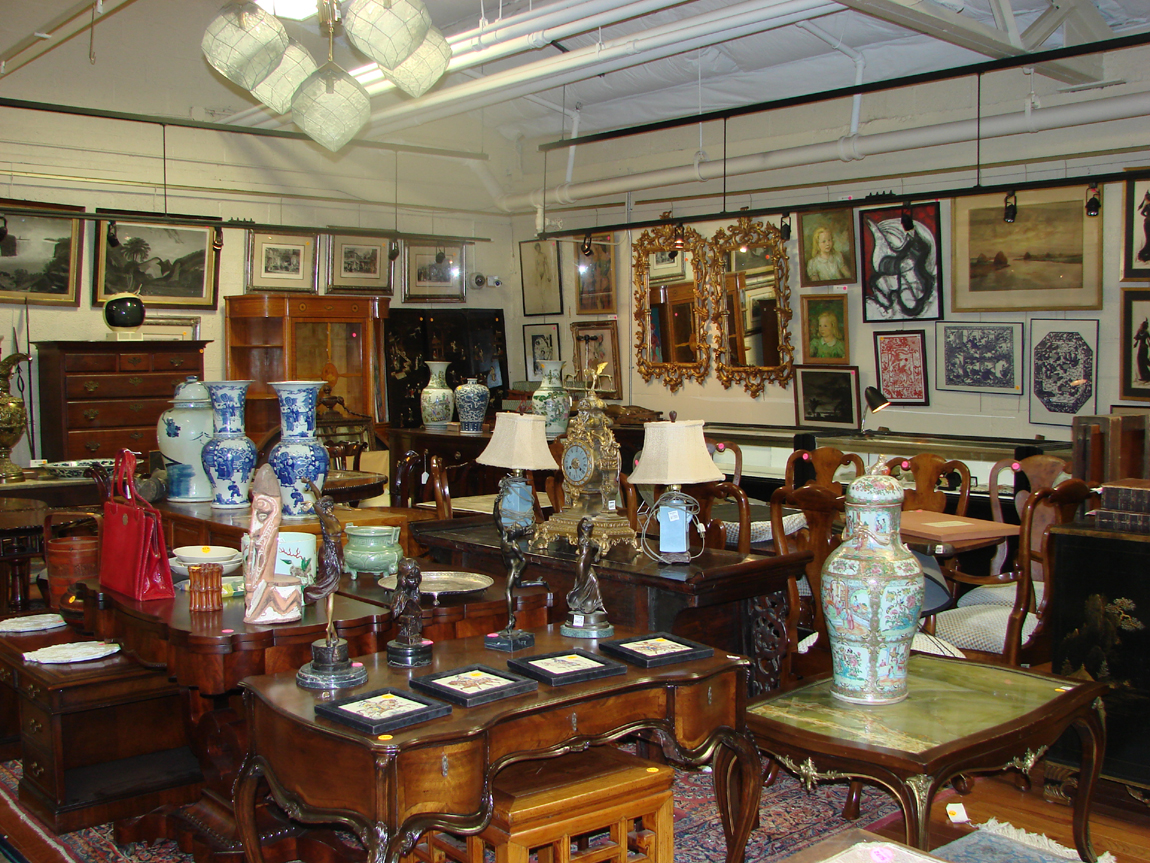
One corner of the packed gallery during the preview. More than 900 lots were available in the two-day sale.
The problem is not unique to Kaminski. Lucy Grogan, vice president and head of the jewelry department at Grogan & Company, told Antiques and The Arts Weekly that her firm had a similar situation at its December jewelry sale, with a buyer who had purchased a Rolex watch, paid for it by credit card and asked for quick shipping. She said that the third-party shipper, who apparently had seen this scam before, advised her that the sale might not be legitimate and that she should wait a few days before releasing the watch. It was good advice — the credit card had initially been approved, but it turned out to be phony. She finished by saying, “We’ll certainly be on high alert for this in the future.” Grogan’s acceptance of credit card payments is now very limited.
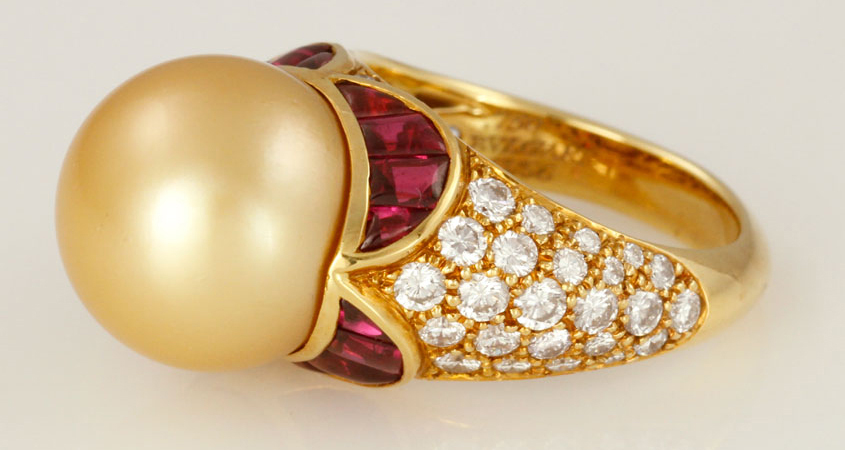
The sale included several pieces of fine estate jewelry. A Bulgari ring with a South Seas pearl surrounded by diamonds and rubies finished at $10,800. Included was a 1989 receipt showing the ring had then sold for $28,000.
Kaminski was properly cautious on the jewelry lots at the December sale, but they did well and the top selling item of the weekend was an 18K white gold and diamond necklace. From a New York estate, the diamond piece had a 20 carat total weight of stones, measured over 18 inches long, and sold for $18,000. From the same estate came a Greek gold and enameled necklace. Weighing 52 grams, it realized $2,520. A Bulgari South Sea pearl ring, set in yellow gold, surrounded by diamonds and rubies, finished at $10,800. It was accompanied by its original sales receipt, showing it had sold for $28,000 in 1989.
Kaminski’s caution paid off on one lot. He was asking for an $800 bid on a piece and an Internet buyer bid $3,500. Kaminski stopped the sale and had a staff member attempt to call the bidder. The phone number had been disconnected so he did not accept the bid.
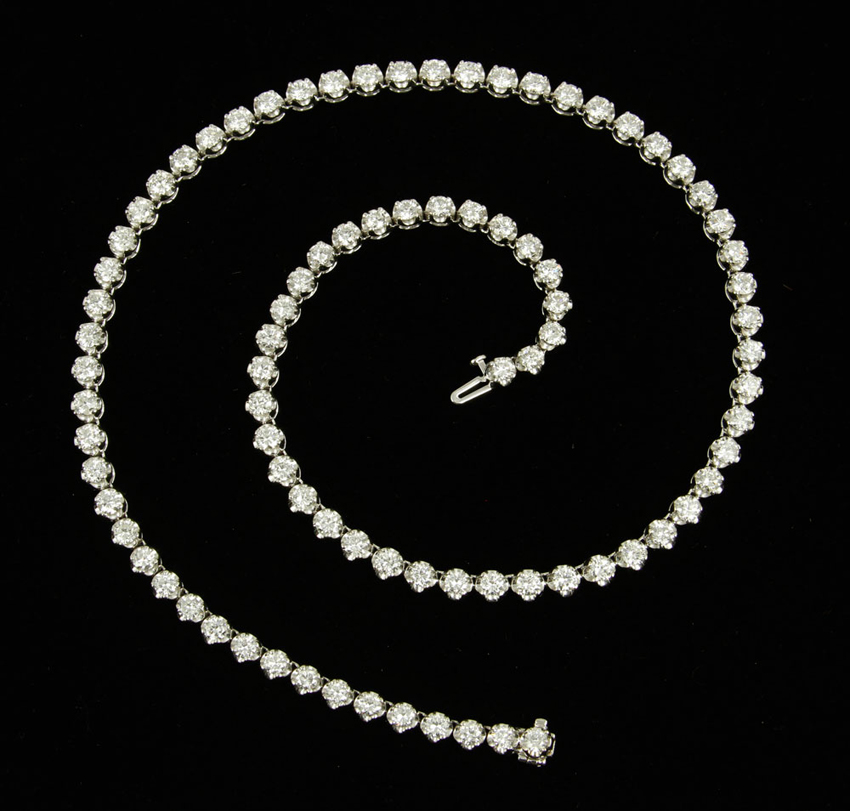
The highest priced lot in the two-day sale was this 18K white gold and diamond necklace with 20 carat total weight of stones; it achieved $18,000.
Kaminski’s post-holiday sale was a collection of collections. One such collection was a large grouping of Nineteenth and Twentieth Century Persian silver, glass and porcelain. Several pieces of porcelain had very fine hand painted portraits of Persian rulers. Each was identified and the quality of the painting rivaled anything done at Meissen or Limoges. For example, a pair of 9-inch plates brought $330. They depicted King Naser al-Din, Shah Qajar, who ruled Persia from 1848 until he was assassinated in 1896. Another 9-inch plate, depicting King Mozaffar ad-Din, the fifth Qajar king, sold for $210.
A Persian silver vase, with 23.8 ounces of silver, engraved with a floral and bird design, and signed on the base, reached $600. An eight-piece Persian tea set, with 58 ounces of silver, with raised figures, glass inserts and silver stirrers went for $3,900. Most of the Persian items were bought by online bidders and one in particular bought several of the lots.
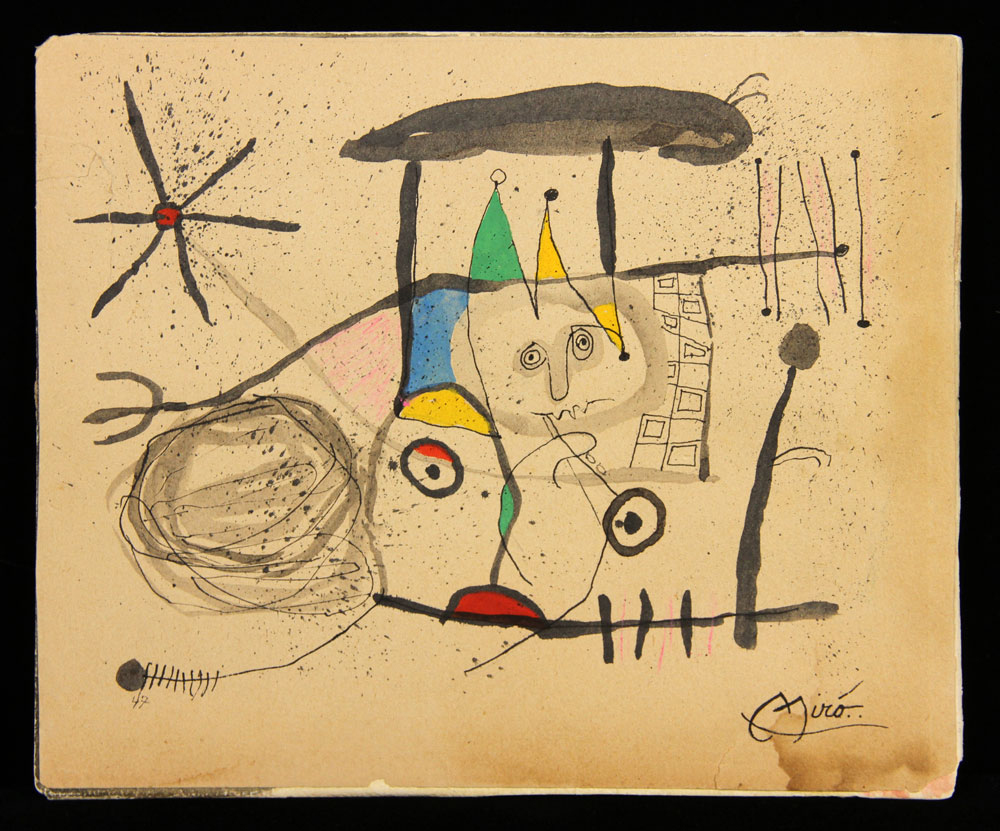
Joan Miro’s abstract watercolor “Horn Player” went out at $12,000. A small stain and tear may have held down the price.
There was a very large collection of Royal Bayreuth china, with well over 300 pieces. It was sold in about a dozen lots and this would definitely have been the time to buy Royal Bayreuth. A grouping of 29 pieces in assorted patterns sold for $540, 25 Corinthian pattern pieces brought $240 and a group of 27 pieces in the Grape pattern brought only $300.
The first day of the sale included a wide assortment of Asian items: jade, porcelain, furniture and art work. Leading the category was a group of five jade pieces, including a miniature screen and four pendants, which ended up at $3,600 against an $800 estimate. A pair of Chinese Twentieth Century famille rose cups, only 3½ inches in diameter, finished at $3,240 and a pair of Chinese blue and white Gu vases sold well over estimate, achieving $2,040.
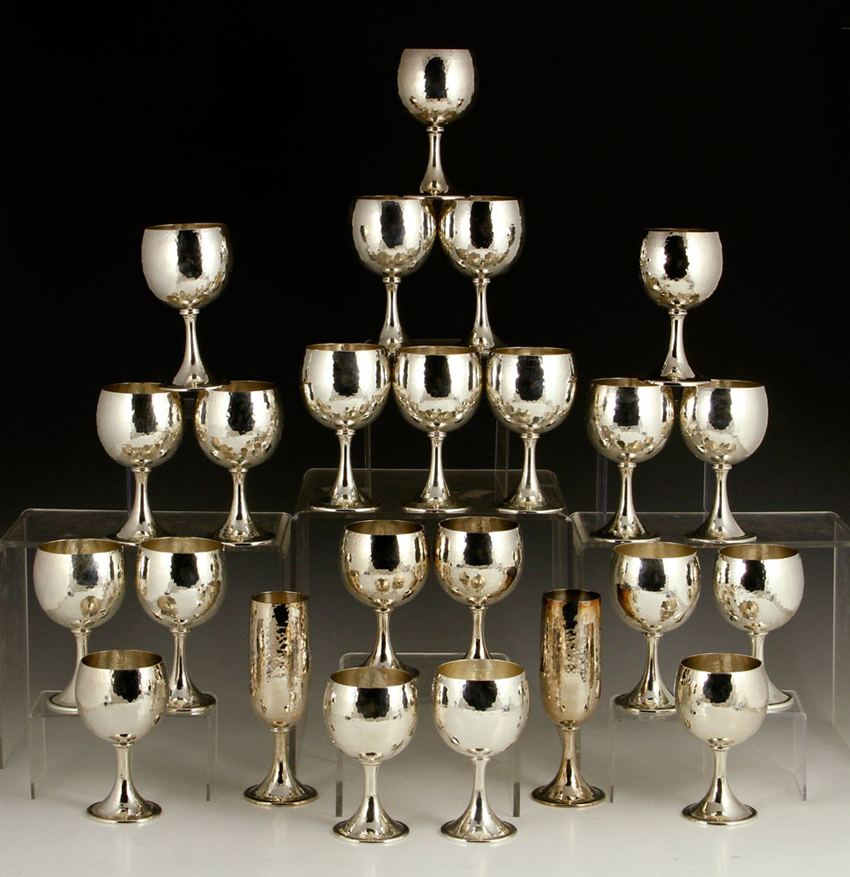
A signed set of 24 sterling silver goblets by Buccellati, with about 120 troy ounces of silver, realized $9,600.
A two-handled Nineteenth Century yellow jade cup went for $1,920. Kaminski said it had been found in a drawer in California estate. Some pieces of Chinese furniture were quite reasonable. A nest of four carved tables fetched $450, a Nineteenth Century carved low table sold for $270 and a Chinese three-panel screen with carved bas-relief details went for only $220. While selling a group of three wooden opium pipes for $240, Kaminski commented that the opium trade created some of America’s earliest millionaires, mentioning two prominent Salem families. Probably not for prominent Salem families, that trade continues to produce millionaires today.
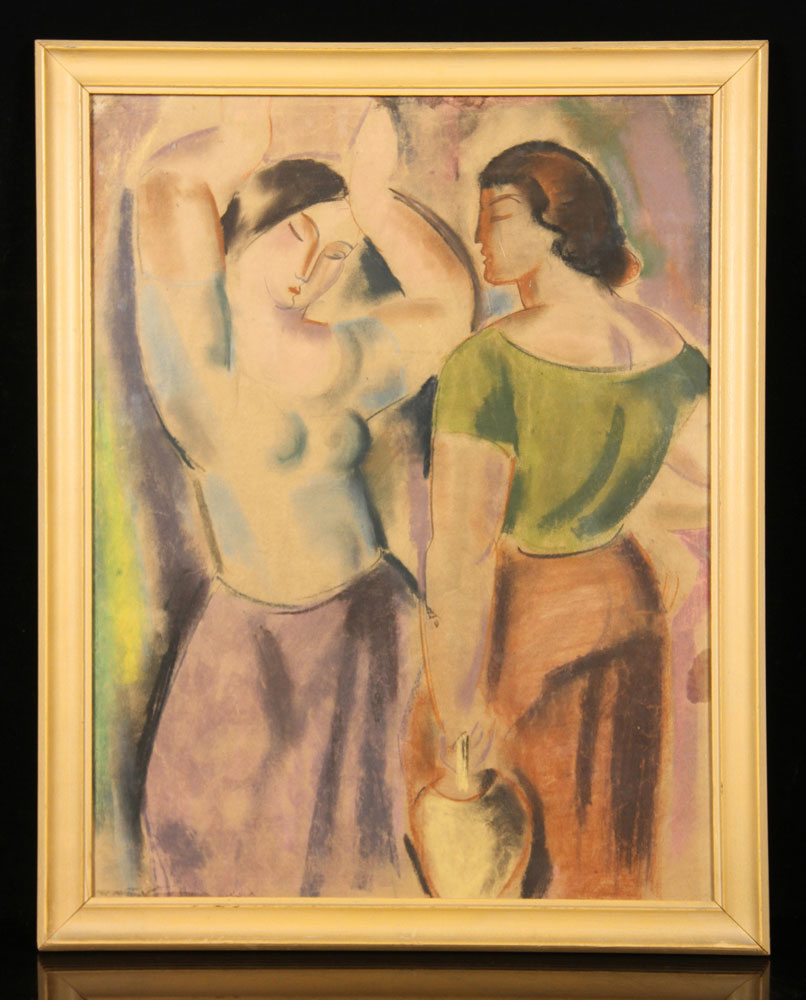
Attributed to Amedeo Modigliani, this mixed media painting of two women in peasant dress holding flowers reached $7,200.
From a doctor’s collection came several lots of early medical books, many from the Nineteenth Century. While some lots were passed, the ones that sold brought prices in line with current Internet offerings. A first edition of Florence Nightingale’s Notes on Nursing, published in 1860, earned $450 and an 1892 edition of William Osler’s Principles and Practice of Medicine brought the same amount. A hand-written Nineteenth Century journal kept by Dr Charles Roberts, with 216 pages of treatments for various diseases, seemed very reasonable, bringing only $210. A first American edition of Grey’s Anatomy, published in 1859, went out for $330, probably a good buy as there are no copies of this edition listed on the Internet.
As often happens these days, there were some bargains to be had with American furniture. An early Nineteenth Century New York sewing stand with inlaid bird’s-eye maple drawer fronts went out at $510, well below its $1,800 estimate. Also selling below estimate was a Nineteenth Century Federal mahogany one-drawer stand with reeded legs and a tiger maple drawer front, finishing at $480. A particularly nice Federal secretary-bookcase with three urn finials, a pair of glazed doors, a center section with tambour slides, on square tapered legs, finished at only $1,200. It might have brought more but a phone bidder could not be reached.
Leading the painting category was an abstract watercolor by Joan Miro, (Spanish, 1893–1983), which earned $12,000. Titled “Horn Player,” it probably could have brought more but for a small stain and tear in the lower right-hand corner. Also doing well was an oil on board landscape with farm buildings and storm clouds overhead by Eric Sloane, (American, 1850–1936). Signed and in its original driftwood frame, its final price was $10,200. A mixed media pastel and watercolor of two women in colorful peasant dresses and holding baskets attributed to Amedeo Modigliani (Italian, 1884–1920) achieved $7,200. A sandpaper painting of Niagara Falls, circa 1850, with several figures and boats in the foreground finished at $1,560.
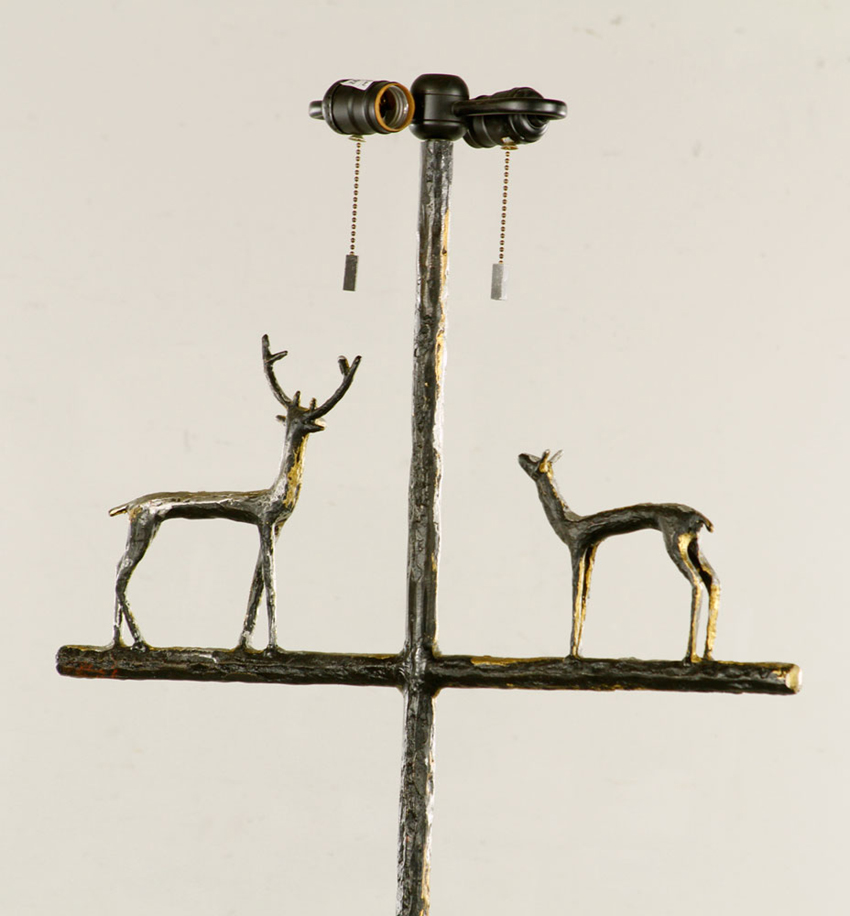
Attributed to Diego Giacometti, a Swiss sculptor and designer, this bronze floor lamp fetched $5,100. Giacometti frequently included animals in his work and on the crosspiece of this floor lamp is a stag and a doe.
Frank Kaminski has been in the auction business for more than 30 years. Before that, as a teenager, he ran garage sales at his house and set up at flea markets, like the one at the old Revere, Mass., drive-in theater. The company, which conducts about three sales a month, has offices in West Palm Beach, Fla., San Diego and Beverly Hills. A call to his Beverly Hills office resulted in what may always be his favorite auction. The call was from Oprah Winfrey’s office. He immediately flew out and after several discussions, secured the auction. Although other companies were bidding on the sale, Kaminski made several suggestions that Oprah liked and the sale was his. The previews attracted more than 10,000 people and the auction gross exceeded $600,000. “In this business, you have to do what you have to do.” That included spending seven hours on a house call on Christmas Day.
All prices reported include the buyer’s premium.
For additional information, www.kaminskiauctions.com or 978-927-2223.

